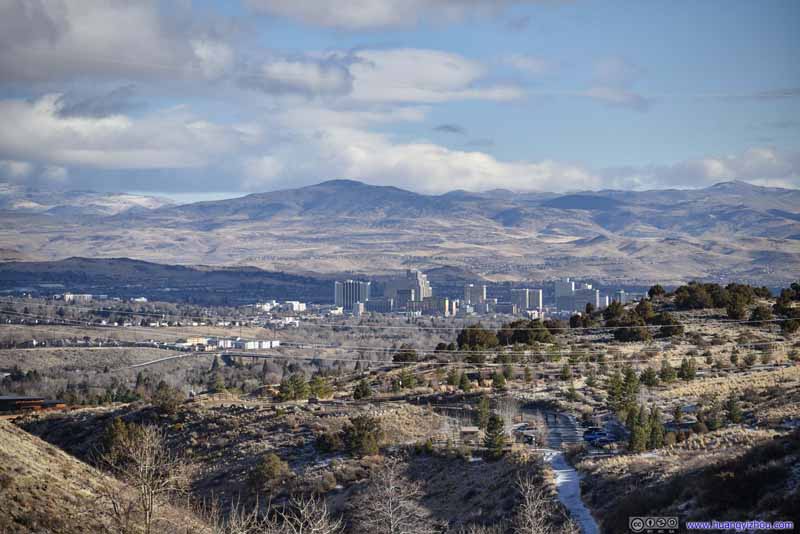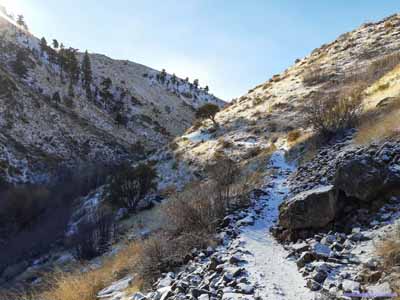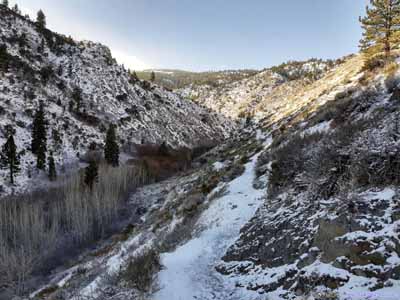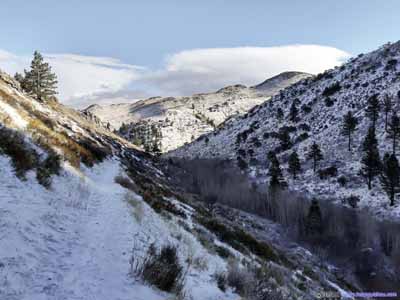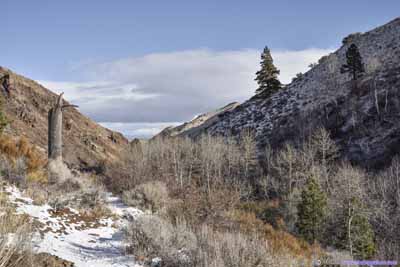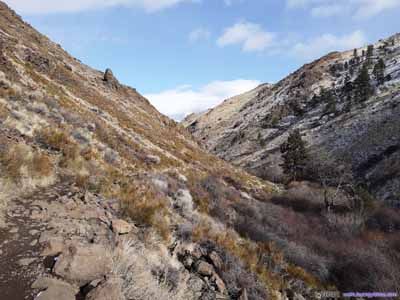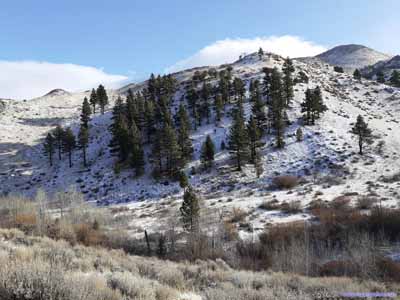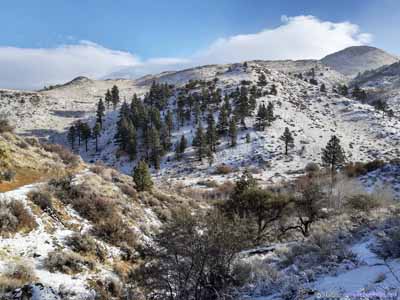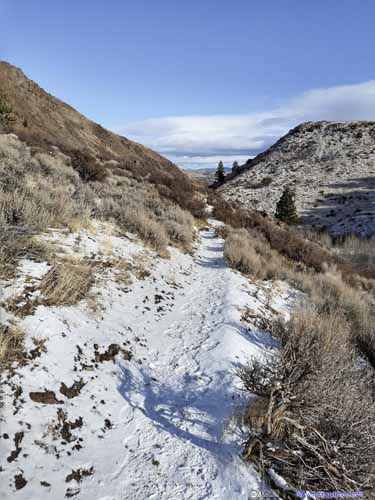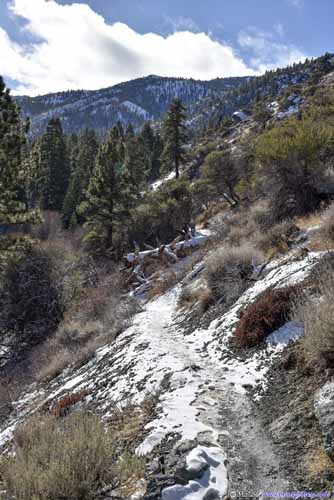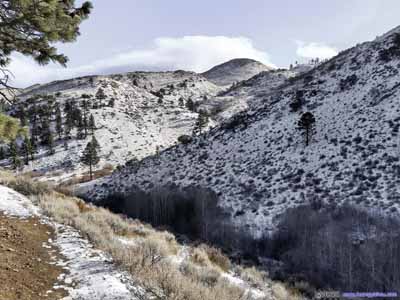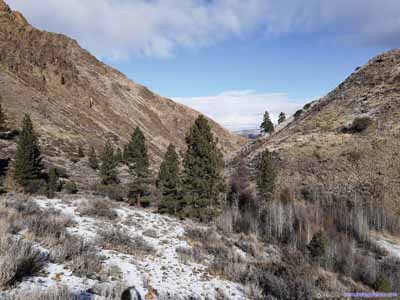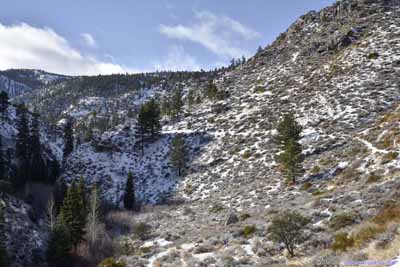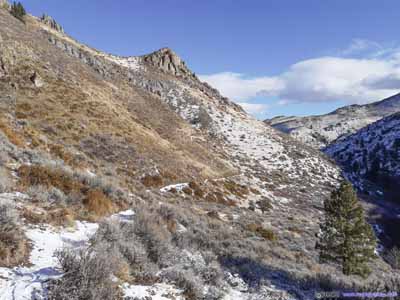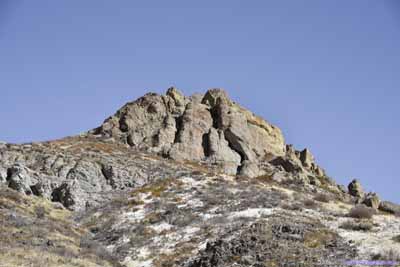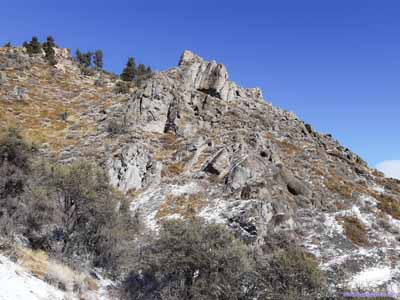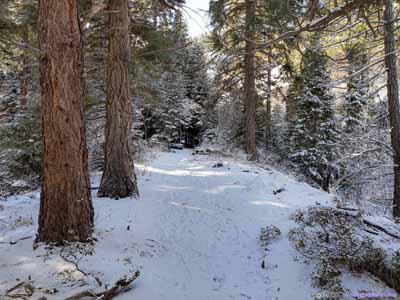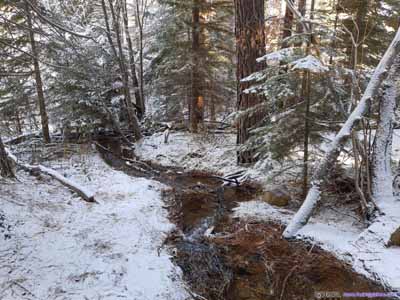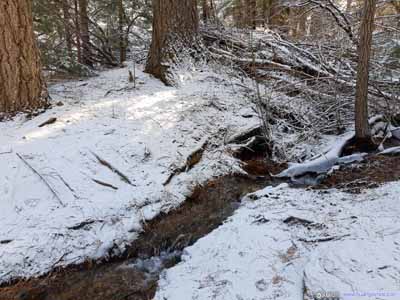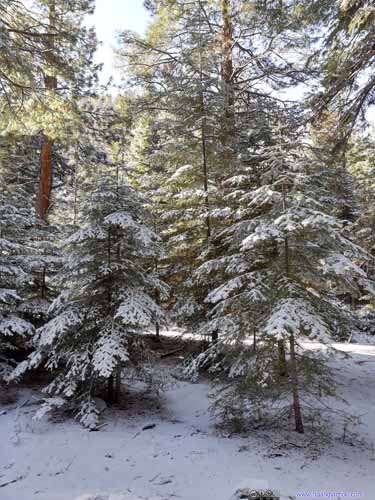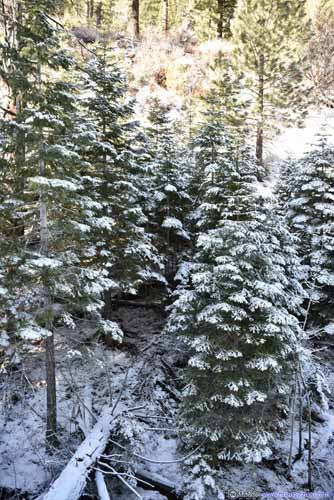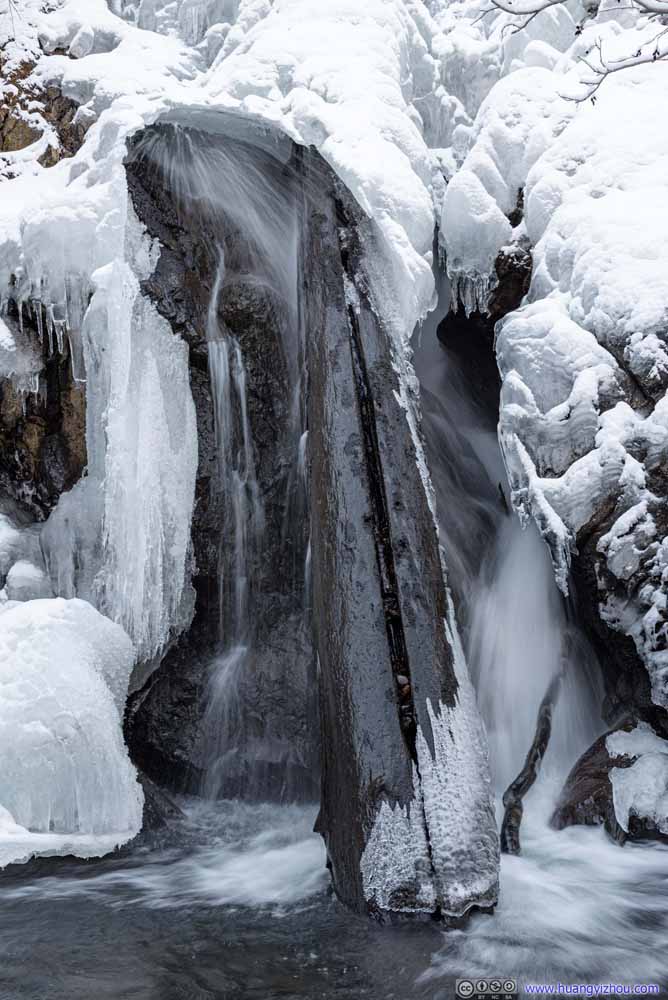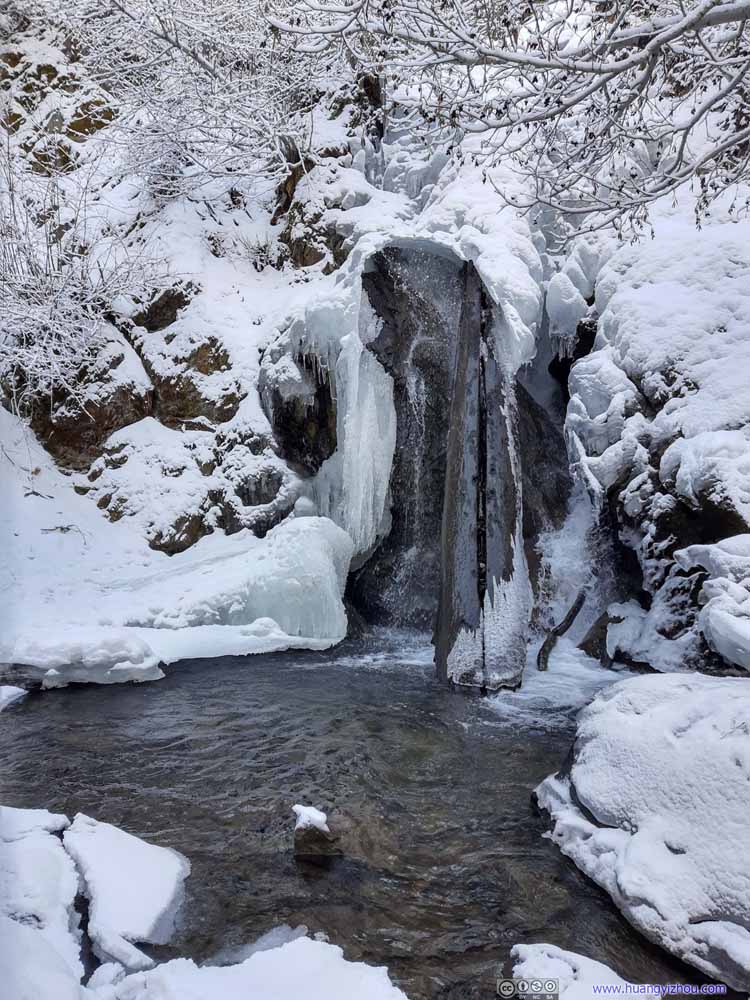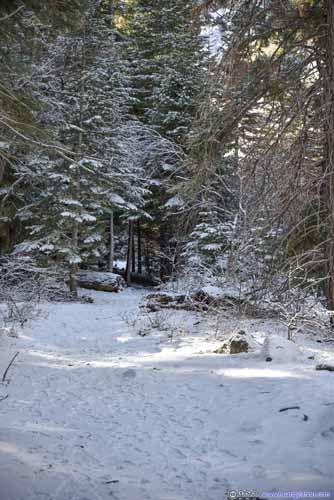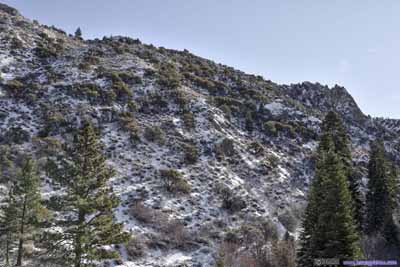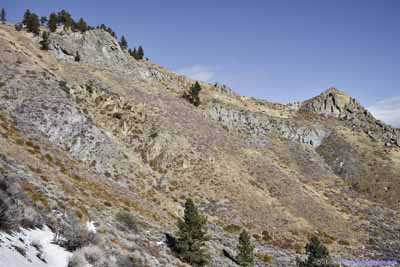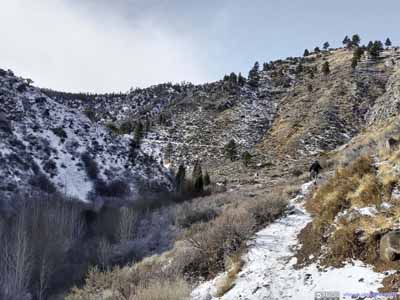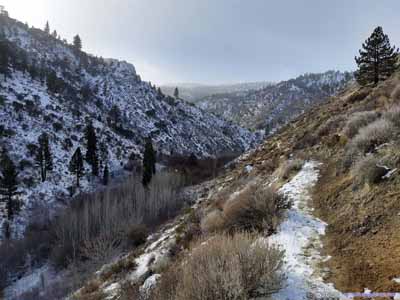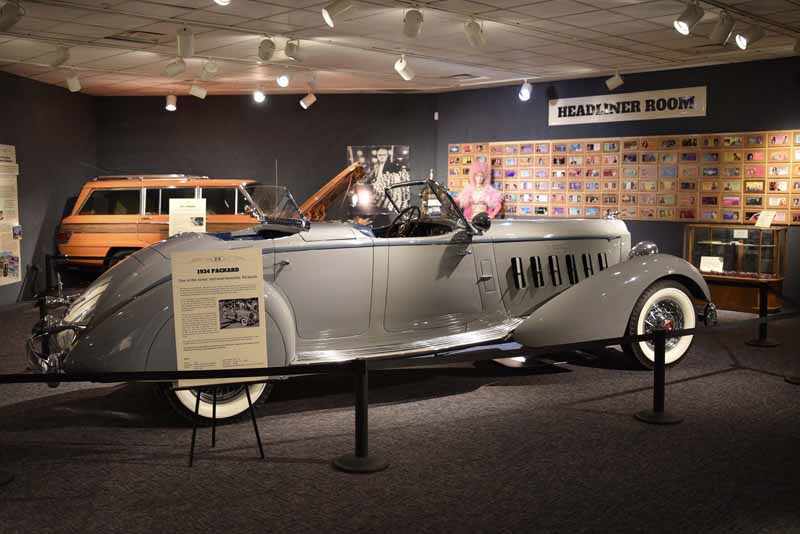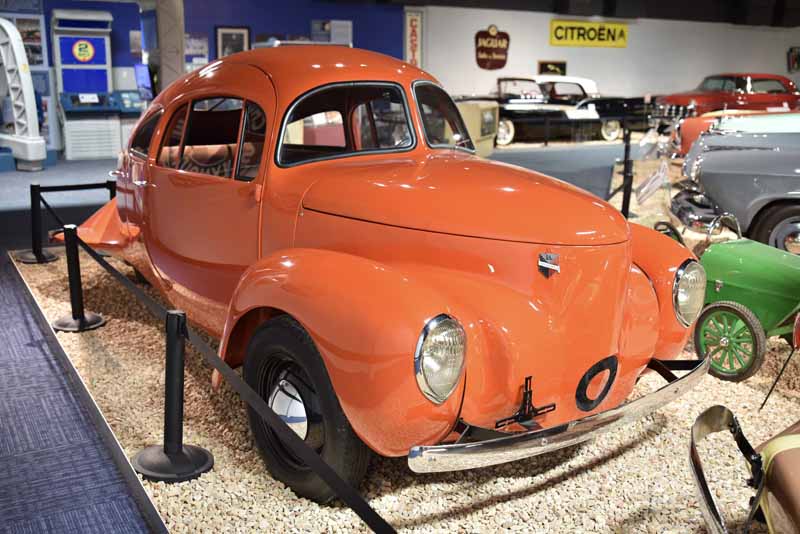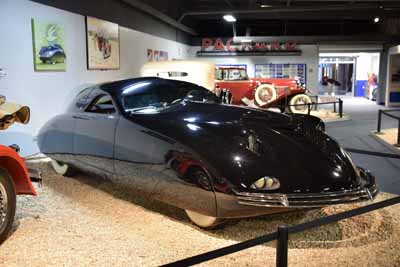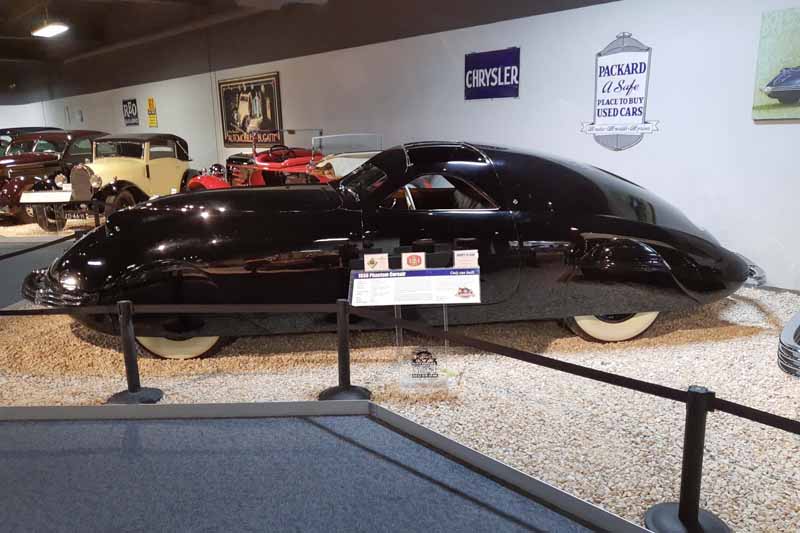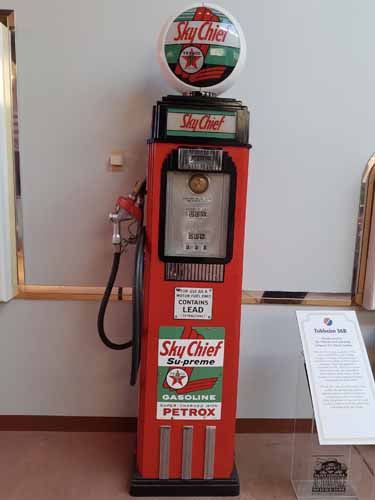Updated on June 24, 2021
Day 6 of 2020 Lake Tahoe Trip, Hunter Creek Trail and National Automobile Museum
Sixth and final day of my Lake Tahoe trip. With most roads into Lake Tahoe still covered in snow, I confined my activities to the city of Reno for the day. I hiked a popular trail, Hunter Creek, in the morning and visited National Automobile Museum in the afternoon.
The winter storm that hit Lake Tahoe region the previous day didn’t cease until early this morning, so Lake Tahoe was a no-go for me today. (Weirdly, no snow or rain fell in Reno overnight.) I searched AllTrails and found Hunter Creek Trail to be a popular getaway for the locals. It started on the outskirts of Reno before making its way into Mount Rose Wilderness, following a canyon and a creek underneath. The end of the trial featured a waterfall, which in this season was beautifully frozen. The 9.3km roundtrip hike seemed like a perfect match for my morning.
While downtown Reno dodged the overnight storm, as I drove towards the trailhead in a mountain residential neighborhood, there were patches of ice on the road (and at the parking lot) requiring extremely careful driving.
Hunter Creek Trail
It’s 9:46am by the time I started my hike. Not far from the trailhead was the boundary of Mount Rose Wilderness.
Here’s GPS tracking:
In the morning, the entire trail from parking lot was covered in patches of ice. To help with traction, I put on microspikes. (The trail was certainly manageable without them).

Trail
As I headed deeper into the valley, the remnants of last night’s storm thinly veiled distant mountains. It’s an alluring scene when morning sun pierced them through in golden rays.
Well, on the downside, remnants of last night’s storm were creating quite strong headwind as I made my way into the valley. It wasn’t very comfortable when very light snow was mixed in such wind.
About two-thirds of way to destination, I entered a forest, where trees were taller and better at preserving snow. That’s when color around the trail turned from brown to white.
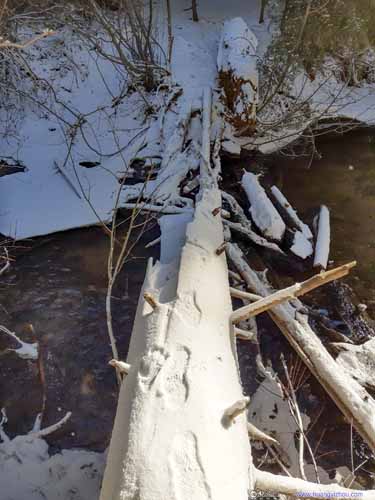
Finally, at 11:25am, I reached the end of trail, featuring a waterfall.
Most of the waterfall was covered in ice, which was then covered in snow. While most of my hike here had been in snow-free terrain, the waterfall was surrounded by white snow, the most soothing color.
In addition, it’s a relaxing experience listening to the sound of waterfall. If not for its bitterness, this was a great retreat for meditation.
It’s quite cold staying put near so much ice, so I headed back at 11:35am.

Muddy Trail
At about 1:20pm, I got back to the parking lot.
While my original plan was to head straight for my next stop of the day, National Automobile Museum, the mud on the return trip caused quite some mayhem as it littered my trousers and buried my shoes. Despite my best efforts washing them off at the nearby Hunter Creek, I still decided to head back to the hotel first and get changed.
So by the time I got to National Automobile Museum, it’s 2:30pm.
National Automobile Museum
I consider myself to some degree a petrolhead, so the automobile museum was a must-see.
The museum mostly featured car collections from William F. Harrah, a casino tycoon in the 1900s. Ironically, the first casino that he opened in downtown Reno 83 years ago permanently closed a few months ago, partly due to COVID.
Here are a few highlights of the museum that interested me, with the description text coming from official information board.
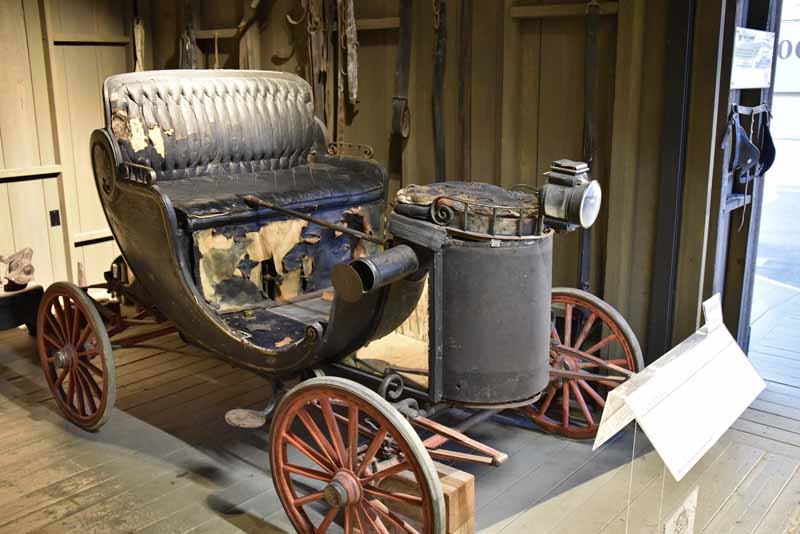
1902 Capitol
Frank Goodwin apparently began working on this Capitol Chariot steamer in 1889. It was built as a prototype and Goodwin eventually sold the patent rights to the Capitol Auto Company, Washington, D. C. In 1902, the only year production was attempted. Powered by a two-cylinder engine, it generated six horsepower through a chain drive to the rear axle. The boiler, located under the small front seat, developed 160 pounds per square inch and was supplied from a 34-gallon water tank.The fuel burner, wood wheels and solid rubber tires were conventional enough, but the seating arrangement anticipated modern ideas by allowing enough room for three abreast. The fourth passenger rode facing backwards on the single front seat over the boiler. (This must have given the phrase “HOT SEAT” new meaning). The Capitol Chariot displayed here is the only one known to exist.
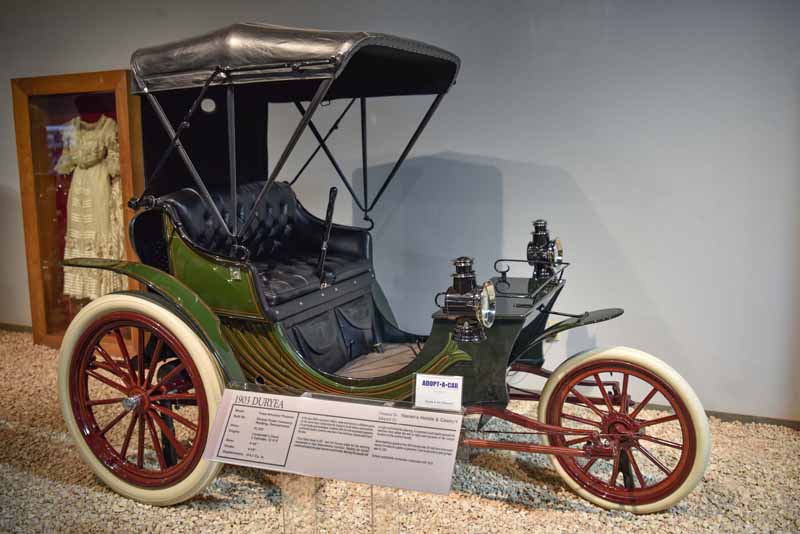
1903 Duryea
In the late 1800’s and early 1900’s, many mechanics in different parts of the world were independently trying to build better automobiles. It is generally acknowledged, however, that the first successful gasoline automobile built in America was that of two brothers, Charles and Frank Duryea.“One Hand Does It All’ was the Duryea claim for the steering mechanism of their three-wheeled invention. Twisting the control handle activated the gear selector and throttle. Moving the handle left or right controlled the steering. A customer could easily operate the machine from either the left or right seat because of the central location of the control handle.Advertised top speed of the 1903 Duryea was 30 mph and one could expect 23 miles to a gallon of gasoline. Cost to put one in your garage was $1,250..Duryea automobile production continued until 1913.
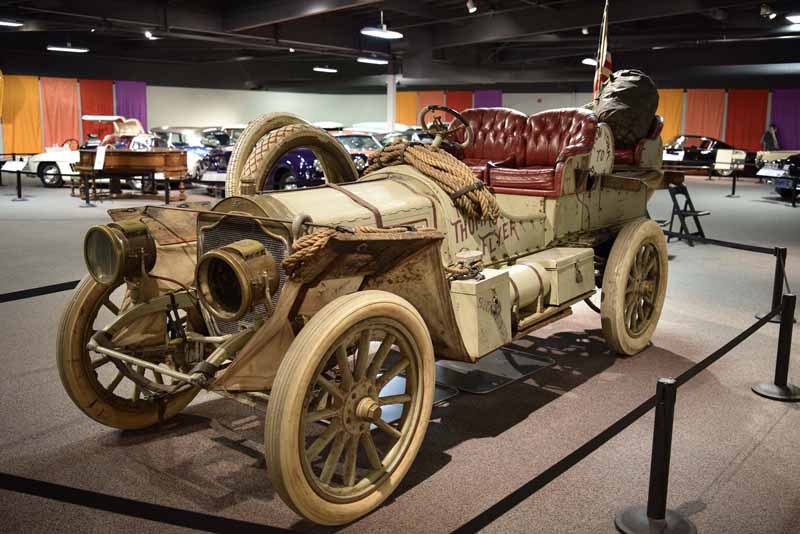
1907 Thomas Flyer
This 1907 Thomas Flyer won the 1908 New York to Paris Automobile Race, traveling 22,000 miles over land and sea, and claimed victory after 169 days of fierce competition.After this victory, Thomas automobile sales increased for a period; however, by 1912 the company was in receivership. The Thomas Flyer remained with the company until sold in the bankruptcy sale in 1913. The car was in very poor condition, from years of neglect, when it was purchased by Bill Harrah (founder of Harrah’s Automobile Collection and Harrah’s Hotels & Casinos) in 1964 from Henry Austin Clark, Jr., of Long Island, New York. To authenticate the car, Harrah contacted 91-year-old George Schuster, who had driven the Flyer to victory in Paris, and invited him to Reno. During the dismantling of the Flyer, Schuster witnessed cracks in the frame and repairs he had made during the race, proving its authenticity.The Thomas Flyer was restored to the condition when it finished the race. This was one of the most enthusiastic and enterprising projects attempted by Harrah’s world-tied restoration shops, involving the skills of more than 40 craftsmen and restoration experts. Alter completion, in a record six weeks, it was approved for a “Gold Star,” the highest restoration designation given by Harrah’s Automobile Collection for quality and authenticity.
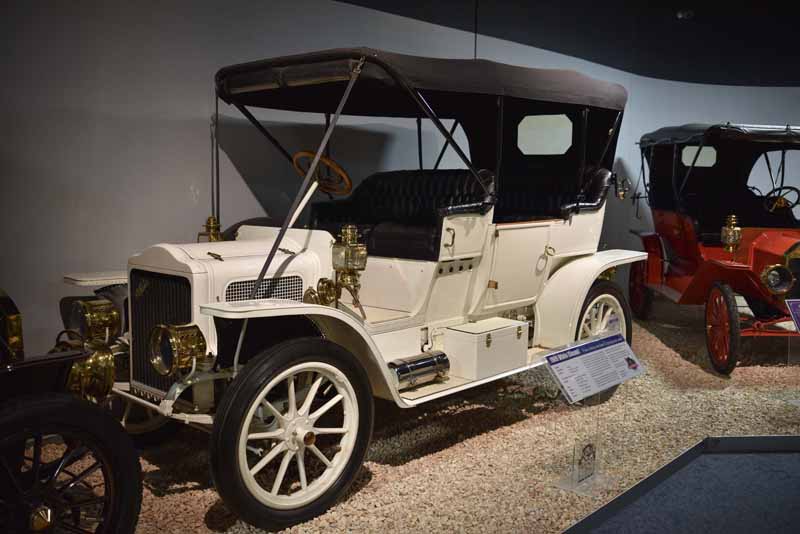
1909 White
The White Sewing Machine Company was established in 1876 in Cleveland, Ohio. In 1899, the founder’s son, Rollin H. White, invented a flash boiler that produced steam rapidly and safely for passenger vehicles. In early 1900, four steam automobiles were built, in addition to a steam truck for the Denver Dry Goods Company. Vehicles were produced under the sewing machine company until The White Company was formed in 1906 for vehicle production.White vehicles gained national fame in speed races, hill climbing contests and reliability runs. In 1905, President Theodore Roosevelt was the first U. S. president to drive an automobile, a White in Puerto Rico. In 1906, President Taft established the first official White House automobile fleet, which included a White.In 1910, White produced its first gasoline-powered automobile and 1911 was the last year White offered steamers. Sales rose in favor of the easier-to-operate gasoline model.
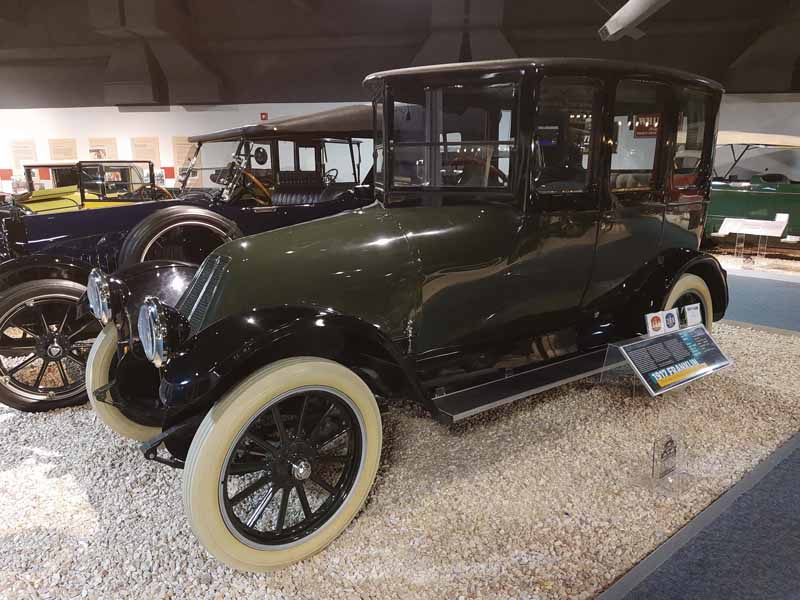
1917 Franklin
The Franklin Automobile Company made cars from 1902 to 1934 in Syracuse, NY. The Series 9-A Sedan shown here was a popular year-round car. It seated five people comfortably with sufficient space for hand luggage. The V-shaped windshield, new for the Series 9, eliminated a pillar on each side, removed all obstruction from straight-ahead vision, and reduced wind resistance. The body cowl was designed to join flush with the hood, something never before accomplished on V-front bodies. Light weight was attained by making the body, fenders, engine base, transmission case and differential case of aluminum. Freedom from dead weight, by use of direct air cooling (no radiator) and a wooden frame, resulted in the Franklin producing more miles per gallon of fuel and more miles to the set of tires. Most Franklins, like this one, were wood-framed, though the very first used an angle iron frame (1902) and, beginning in 1928, the heavier cars adopted a conventional pressed-steel frame.Franklin was the undisputed leader in air-cooled cars at a time when virtually every other manufacturer had adopted water cooling as cheaper and easier to manufacture. Before the invention of permanent antifreeze (in 1926), the air-cooled car had a huge advantage in cold weather, since they did not need to be drained and refilled daily. Accordingly, Franklins were popular among people such as doctors, who needed an all-weather machine. The limitation of air-cooling was the size of the cylinder bore and the available area for the valves, which limited the power output of the earlier Franklins.
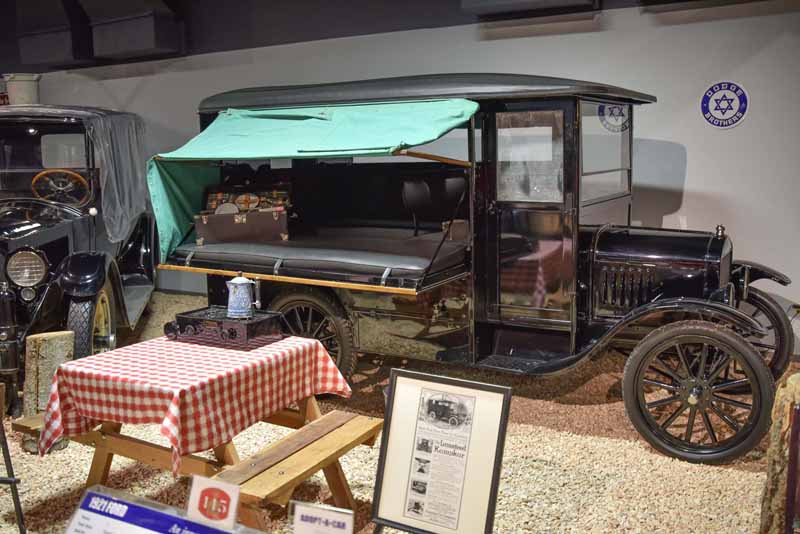
1921 Ford
More than 2,000 accessories could be purchased at the peak of the Model T’s popularity in the 1920s. The Lamsteed Kampkar body was just one created to tempt the estimated 15,000,000 Ford owners worldwide. It was engineered by Samuel Lambert of the Lambert Pharmaceutical Company, makers of Listerine Mouth Wash. Lambert loved the outdoors and felt suitable transportation increased the enjoyment.The Lamsteed body’s dimensions matched those of the standard Model T and advertising claimed it could be attached in just hours. The 1921 Kampkar could seat six adults, provided sleeping room for four, boasted a folding table, two-burner stove, eight-gallon water supply, ample ventilation, plus easy storage of blankets, clothing and food in several lockers. It included a complete camping set containing cooking and eating utensils packed in a small trunk. The Kampcar was a remarkable innovation that predated the RV craze by about 50 years.
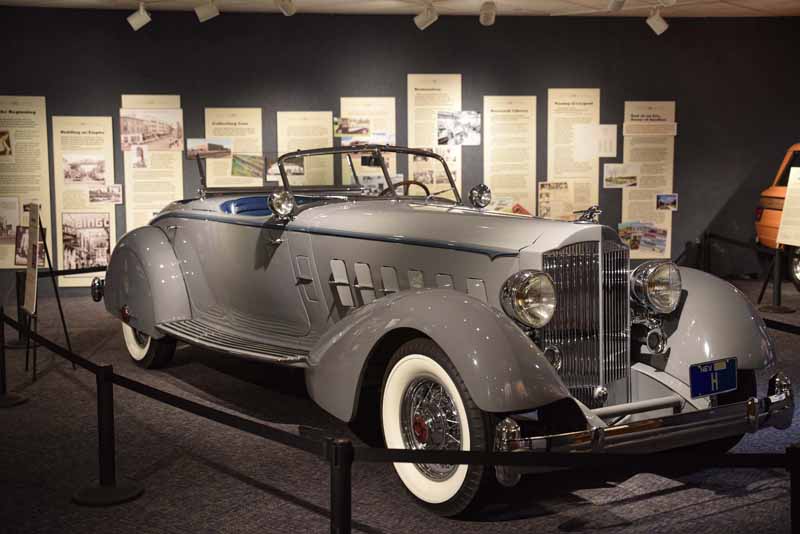
“One of the rarest, and most beautiful, Packards”Bill Harrah loved Packards. His first car was a Chevy roadster given to him by his Dad, and he subsequently had several Fords. But once he started making some real money, he preferred Packards (at least until he opened his own Ferrari dealership). At one time, he had 92 different Packards in his famous Harrah Automobile Collection, but many think this 1934 was the best. .It is an extremely rare model known formally as an 1108 LeBaron Sport Dual Cowl Phaeton. Mr. Harrah purchased this car in 1964, and it was completely restored in his shops in 1975 (a project headed by local master mechanic Roger Hiestand).The V-12 engine produces 160 horsepower at 3,200 rpm and 166 lbs. of torque at 1,200 rpm. It is remarkably smooth. The car was driven to this location under its own power and was virtually silent the entire time. The car has a three-speed transmission, weights 5,130 lbs. and has a wheelbase of 147 inches. In 1934, the average salary was $1,368, so for the purchase price of this Packard ($7,820), one could buy a very nice home!This particular car has been a favorite of fans over the years due to its frequent appearances in major parades locally and at such events as the Rose Bowl Parade in Pasadena filled with Celebrities.
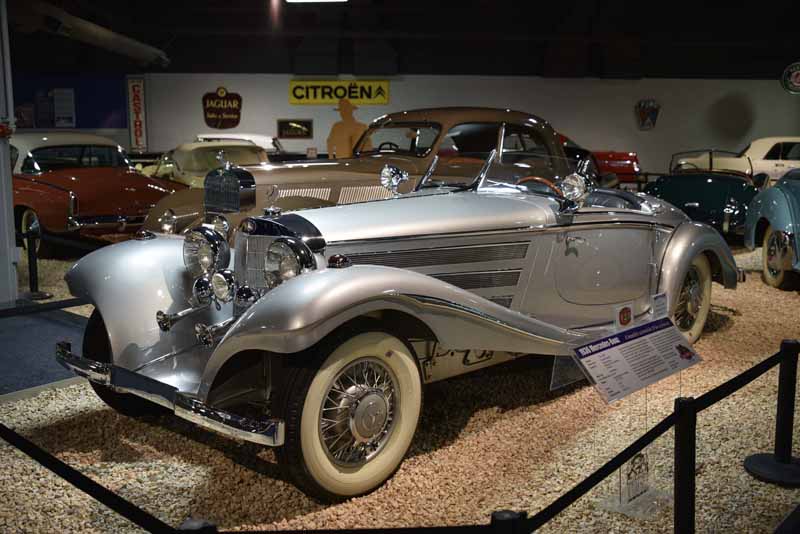
1936 Mercedes Benz
The Special Roadster is one of the most beautiful models in the world. Mercedes-Benz automobiles by Daimler-Benz were considered by some to be the most impressive classics ever built. In the U.S., 1920s and 1930s’ models were extremely popular and, except for Rolls-Royce, more were imported than any other foreign car.The 500K series began in 1932. The model designation came from the engine displacement, 500 deciliters, and “K” for Kompressor (supercharger). With excellent acceleration, top speed was more than 100 mph. It was solid and dependable, with superb craftsmanship.The 500K was shown at leading European International Automobile Exhibitions. This 500K was purchased in 1936 at the London exhibition by Princess Nina Mdivani, wife of Denis PS. Conan Doyle (son of Sherlock Holmes’ creator, Sir Arthur Conan Doyle). They drove it throughout Europe on their honeymoon, starting where they were married, St. Donat’s Castle in Wales, owned by William Randolph Hearst.
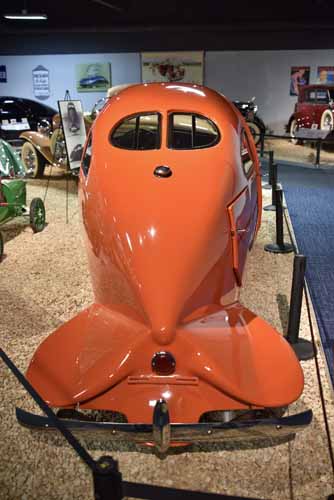
Following closure of the Franklin Automobile Company in 1934, former Franklin engineers Carl Doman and Edward Marks organized their own firm to develop a new, air-cooled engine design. Paul Lewis of Denver, Colorado, conceived the idea for this futuristic automobile in the early 1930s and in 1936 contracted with Doman and Marks to build a prototype.Working from an aerodynamically-styled model created by John Tjaarda, designer of the Lincoln-Zephyr, construction began on the unusual three-wheeled, front-wheel-drive Airomobile. It was pronounced road-ready in April 1937. This Airomobile prototype was driven more than 45,000 miles throughout the United States in a promotional effort to raise production capital. While the Airomobile proved itself a technical success by performing creditably at speeds of up to 80 mph and averaging 43.6 mpg of fuel, it failed to attract financial backing. Although intended as a low-cost, mass-produced people’s car, this was the only Airomobile built.
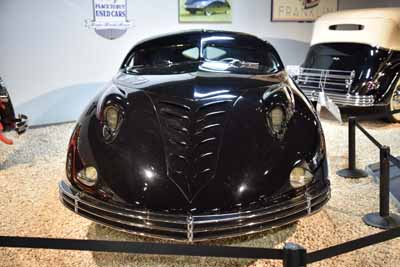
This car was designed by Rust Heinz (Heinz ketchup family) and Maurice Schwartz (Bohman & Schwartz custom body firm). Heinz died shortly after the Phantom was completed, ending plans to go into limited production.Costing about $24,000 to build, it featured front-wheel-drive, an electric gear shift, four speeds forward, an engine modified by Andy Granatelli (top speed 115 mph) and modified Cord 810 chassis.The alloy steel and aluminum body has no door handles. Doors open with buttons on the outside and on the loaded instrument panel that includes an altimeter, barometer and compass. The interior is padded with cork and rubber for safety, sound proofing and insulation, and seats four people in the front and two in the back, facing the rear. It was featured as the Flying Wombat in the 1938 movie, The Young in Heart, starring Paulette Goddard, Janet Gaynor, Billie Burke and Douglas Fairbanks, Jr.
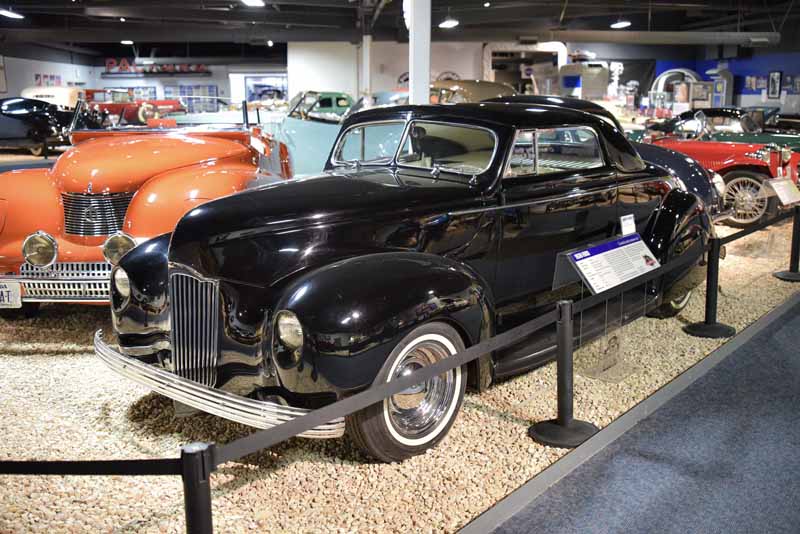
1939 Ford
Customizing cars has been a part of the automobile scene almost since the first car was built. Originally, customizing was done by manufacturers to satisfy the desires of customers who wanted more than a common mass-produced automobile. People demanded tastefully colored exteriors, plus such “extras” as trunks, side-mounted spare tires, spotlights and chrome gadgetry. Metalwork modifications did not become common until about the early 1930s, and then a more serious form of customizing took off in earnest in the early 1940s as illustrated here.This car was created by Harry Westergard, famous custom car pioneer. Seats are from a 1940 Chevrolet; the removable hard top was made from the back half of a 1941 Packard Sedan; two front bumpers are from a 1937 DeSoto; a 1948 Cadillac rear end was narrowed to fit; the engine is from a 1950 Oldsmobile and the transmission is from a LaSalle.
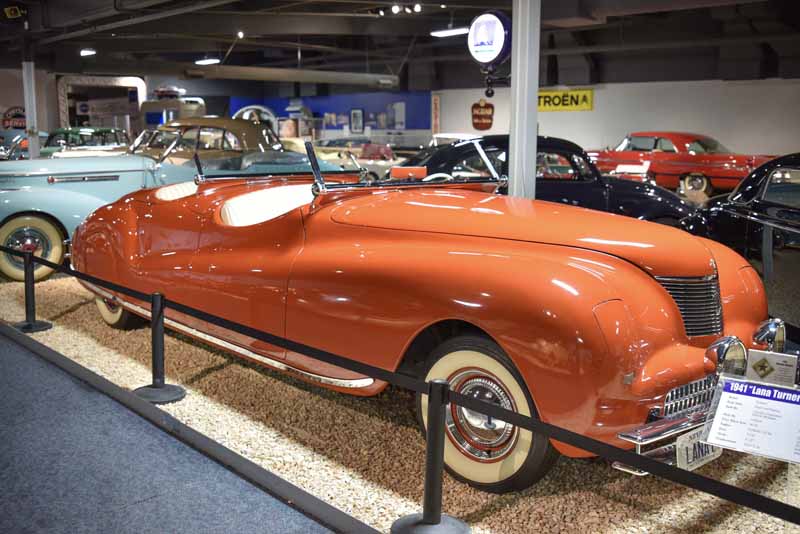
1941 “Lana Turner” Chrysler
This car was originally owned by millionaire playboy Henry J. “Bob” Topping, Jr., former husband of movie-star Lana Turner. The car became fondly known as the “Lana Turner Chrysler.” Topping customized it with a Cadillac engine and transmission, and personalized it by having his name cast into the hubcaps and engine valve covers and adding his initials to the grille.The Chrysler Newport was designed by Ralph Roberts and custom-built by LeBaron Carrossiers (coach builders) in Detroit, Michigan. Newports featured an all- aluminum body, concealed headlamps, folding windshield and hide-away top. A total of six Newports were constructed by Chrysler as show cars and four are known to exist today. One of the Newports was selected as the 1941 Indianapolis 500 Pace Car. The Pacemaker Newport became the first concept car to front the Indy 500 field, and it was the only non-production automobile to do so until the Dodge Viper concept served as pace car in 1991.
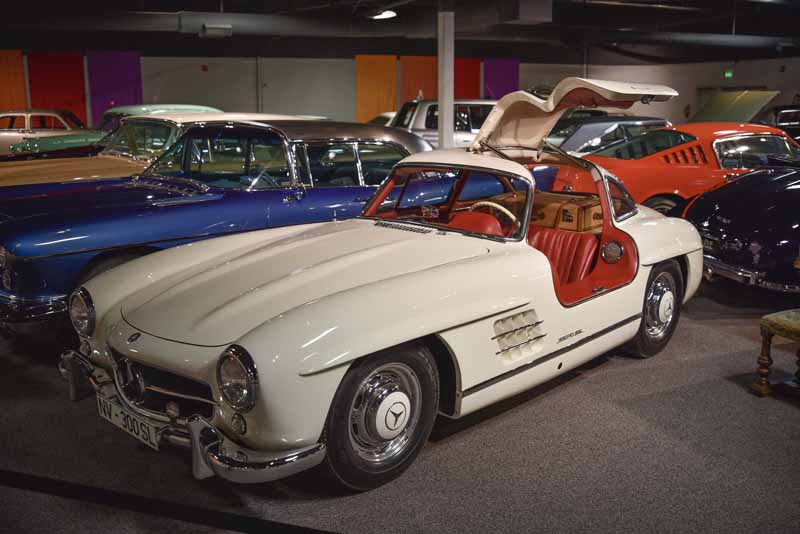
1956 Mercedes Benz
In 1952, after an interval of more than ten years, Daimler-Benz again began producing a sporty car, the 300 SL. the designation “SL” (Sport-Light) was used to describe a design in which the frame was a light but very stiff lattice structure of thin welded steel tubing. The outer body covering was also very light as the lattice structure had to bear all the stresses, The engine was developed from that of model 300 S and was mounted at an angle to provide a better view ahead. The 300 SL model was then tested in the sports car races of 1952, winning the Swiss Grand Prix, the 24-hour LeMans, the German Grand Prix and the third Carrera Pan-Americana in Mexico against the fiercest international competition. The 300 SL went into general production in 1954 and many improvements were made as a result of the experience gained in racing.The 1956 Mercedes-Benz 300 SE Gull Wing Sports Coupe displayed here has a 6-cylinder OHC fuel-injected engine developing 240 hp with an advertised top speed of 146 mph. Special fitted luggage came with the car. This car was entered in the 1959 Bonneville Salt Flats Class D speed trials and set a new record at 143.769 mph. With the engine’s direct fuel injection to each cylinder, the car’s unique styling and “gullwing” doors that open upward, the 300 SL was one of the most popular sports cars produced. Mercedes-Benz 300 SL production ceased after 1957, and was followed by the introduction of the 300 SL Roadster model from 1957 through 1963.
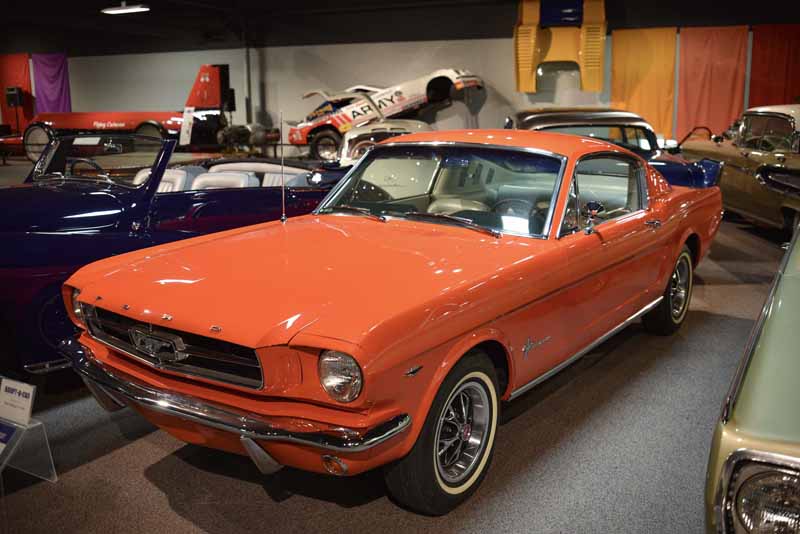
1965 Ford
In 1964, Ford broke conservative design barriers and produced an entirely new model, the Mustang, offered as a Hardtop Coupe or Convertible. Mustang combined the excitement of youth with a practical family sedan, with its lengthened hood, shortened rear deck, sculptured body panels and sporty bucket seats. Mustangs built between April and early September are known as “1964 1/2.”.In 1965, during the first full year of production, demand kept Ford hard-pressed to keep up with its success. Standard equipment included bucket seats, floor-mounted shift for manual and automatic transmissions, vinyl interior, padded dash and full wheel covers.The “standard” Mustang offered options for buyers to custom-tailor their cars from high performance “sports cars” for street or competition use to comfortable “luxury cars.” A new variation for 1965 was the Fastback 2 + 2, as displayed here. The high-performance version was converted by Shelby-American into their exciting GT-350.
In addition to cars, the museum also featured a few displays of early gasoline pumps.
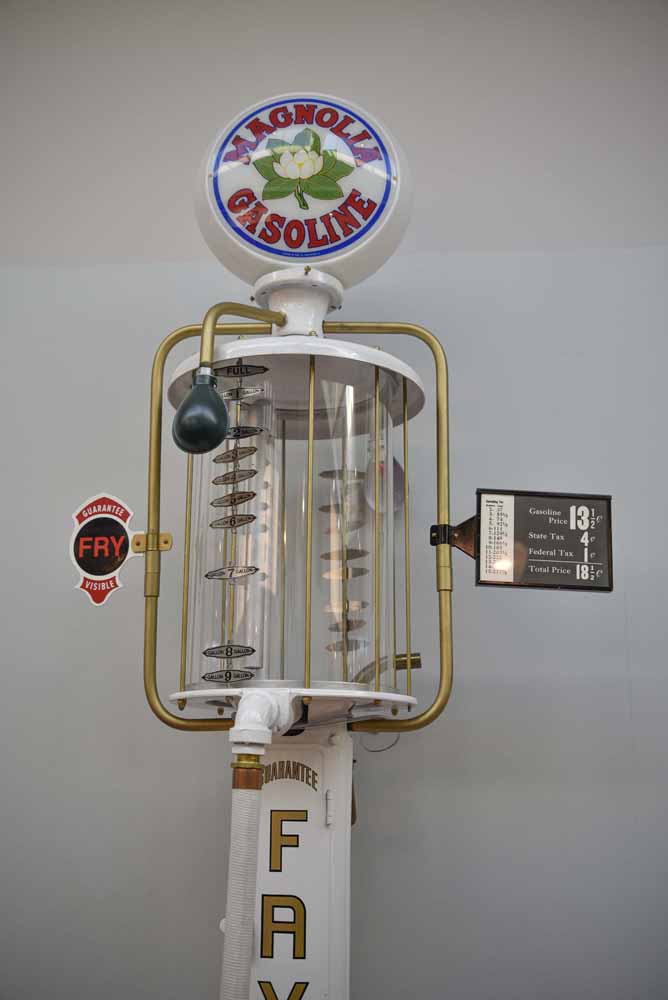
Gasoline Pump
In early days, gas stations featured pumps with transparent storage like this, so that people could clearly see how much gasoline went into their tanks.

Left: Tokheim 850 VolumeterManufactured by: The Tokheim Tank and Pump Company, Ft. Wayne, Indiana.By the late 1920s, electric meter-type pumps were rapidly replacing the visible-register models.Loosely known as clock-face pumps, they had two counting dials, one on each side, which dominated the face of the pump. A large red pointer, similar to the minute hand on a clock, measured gallons in fractions. After a complete revolution, a bell would signal one gallon. The total gallons pumped were measured by a shorter black hand on the dial. Variations included a numerical counter, which allowed the station owner to keep track of gallons pumped for the day, and a glass instrument called the tele-gauge. The tele-gauge was mounted on the side of the pump to mimic the visible register pumps, which helped customers make the transition to newer pumps.This pump was built September 22, 1930 and it was restored in February 1971.Right: Tokheim 36BManufactured by: The Tokheim Tank and Pump Company, Fort Wayne, Indiana.This Sky Chief pump was built in 1936. It is a computer-face type of pump designed to compute the purchase price in dollars, cents and the number of gallons consumed. These first appeared on the market in 1933. With the exception of the exterior case, this remained the basic design of the gas pump until the introduction of modern computerized pumps with digital faces in the 1980s.The Art Deco Movement was in full-swing at this time and many gas stations featured attractive, modern architecture. Gas pump manufacturers designed sleek, streamlined art deco exterior cases for their pumps to match the architecture and design of the gas stations.
I left National Automobile Museum just before its closing at 5:30pm, which concluded a rather detailed tour of its collections. After that, I headed back to hotel and called it a day.
END
![]() Day 6 of 2020 Lake Tahoe Trip, Hunter Creek Trail and National Automobile Museum by Huang's Site is licensed under a Creative Commons Attribution-NonCommercial-ShareAlike 4.0 International License.
Day 6 of 2020 Lake Tahoe Trip, Hunter Creek Trail and National Automobile Museum by Huang's Site is licensed under a Creative Commons Attribution-NonCommercial-ShareAlike 4.0 International License.


